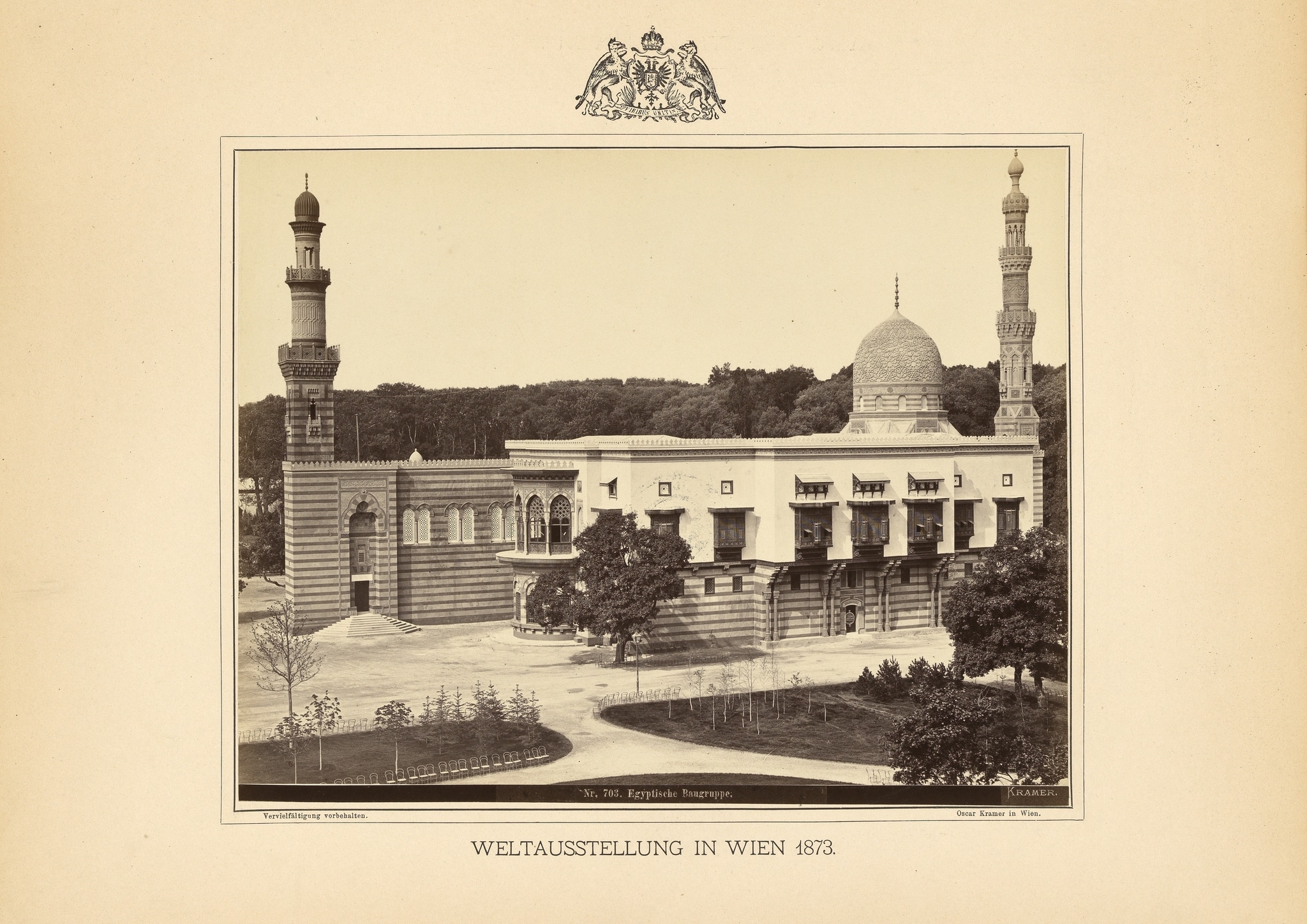Recherche
On the minaret annex three pairs of mullioned windows can be seen. Their stucco lattices with a pattern of flowers in a star shape surrounded by perforated circles correspond to the stucco window planed by František Schmoranz for the Egyptian pavilion (IG_412). The window’s stucco lattice is an exact copy of a window drawn by Schmoranz in 1871 in Cairo in the mausoleum of the Qalawun funerary complex (built in 1284–1285) (IG_411). The only adjustment Schmoranz made was to the outline, giving the windows for Vienna a pointed arch.
The usage of coloured glass within the stucco grid is mentioned in a newspaper article on the minaret wing of the Egyptian pavilion. The author perceived the aesthetic effect of the windows with its ‘tropical plant decoration’ on the corridor as picturesque and seductive. (Vincenti, 1873, pp. 1995–1996.)
The Arab dwelling shows different window types. On the one hand, the round stained glass windows in orientalizing style which do not reference the specific technique and materiality of stucco and glass windows. On the other hand, Carl von Vincenti describes in a newspaper article the square windows above the mashrabiyya oriels as coloured glass inlaid into ‘plaster arabesques’. According to Vincenti, this type of window was called ‘Karamin’ and the high chambers of the Egyptian pavilion owed their very peculiarly pleasant twilight to them. (Vincenti, 1873, p. 1995). Photographs of models for the Egyptian pavilion’s décor show the stucco lattices used in the single (IG_423) and triple (IG_422) upper windows of the Arab dwelling.
Datation
1873
Sites liées
Lieu de production

